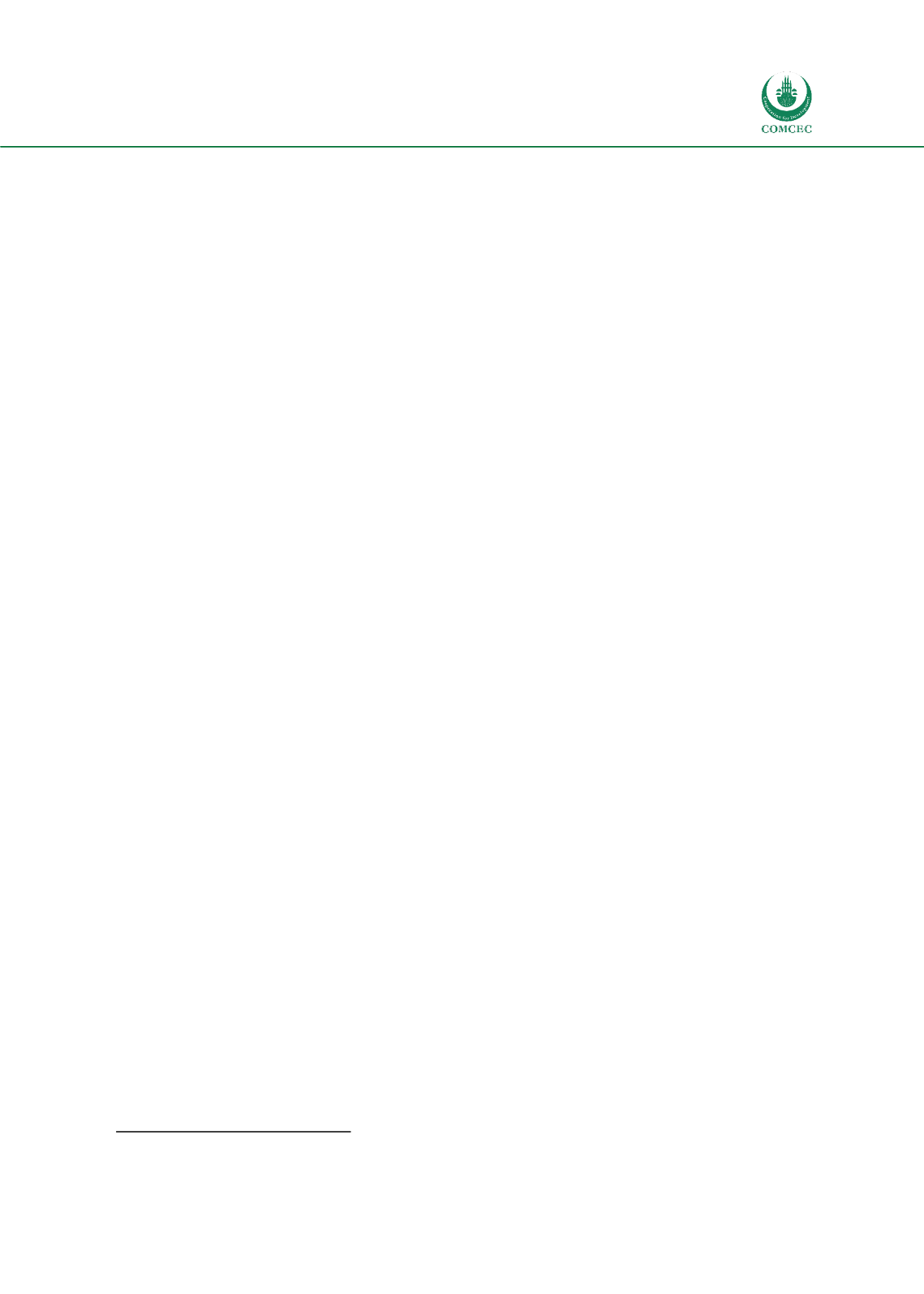

Improving the Border Agency Cooperation
Among the OIC Member States for Facilitating Trade
81
countries. Cargo traffic stops only once: for the traffic from Uganda towards Kenya they stop at
the Kenya Building, while for traffic from Kenya towards Uganda the only stop is at the Uganda
Building. For passengers, the situation is somewhat different: for persons from Uganda to
Kenya and from Kenya to Uganda the only stop is on a separate traffic lane at the Customs
building in Uganda.
The infrastructure in the control zone is not finished yet but will be ready by the end of 2016. A
new bridge between Uganda and Kenya is under construction. After finishing the construction
work, the traffic will be guided in an optimised way through the control zone – however, the
renewal of the control zone will not have an influence on the processes and procedures.
Multiple other government agencies, including Immigration, National Bureau of Standards,
Agriculture, Plants, Veterinarian, Fishery and National Drugs Authority, are working in the two
Customs Buildings. In addition, insurance companies, banks and cross-border trade
associations have their offices in the buildings. The OSBP concept is not completely new for the
Malaba Border Post, as some of the OSBP elements were introduced there already in 2005, due
to the high workloads at both sides of the border.
139
Working principles and practices:
To realise the cooperation between Ugandan and Kenyan
Customs as well as with other authorities in the two countries, multiple approaches to
organise the work have been introduced and implemented:
Placing officers from all authorities physically together to handle the work
. The
most visible example can be seen at the two immigration counters: one for Uganda
(with a Ugandan officer) and one for Kenya (with a Kenyan officer). The two officers
see each other and can communicate with each other. Between the two desks there is a
way leading out of the building; thus no-one can leave without been seen by the
officers.
Joint examinations and accepting each other’s work.
An example is the way of
working between the Ugandan National Bureau of Standards and the Kenyan Bureau
of Standards. In a MoU, both national authorities agreed on joint examinations and
accepting each other’s work. Documentation and certificates marked by one of them
after examinations are accepted by the other authority. This is enabled by the
harmonised legislation within the EAC.
Automating the work.
For the clearance process, Uganda uses the ASYCUDA World
system. Next to Customs, all other agencies are linked to the system, with the aim to
cover all aspects from different legislations in the treatment of declarations. Also the
banks are linked to the system to guarantee that the border taxes are paid in full
before releasing the goods. For the treatment of declarations, the system distinguishes
the following four channels:
o
Green channel. No action / Release of goods.
o
Red channel. Physical examination of goods before release. In case there is the
need of a physical examination, these examinations are done by a team
composed of Customs from Uganda and Kenya and all other agencies that are
needed.
o
Blue channel. Release of goods, followed by post-clearance audits.
o
Yellow channel. Some documentation has to be completed before release of
the goods.
139
Ruyter’s visit to Uganda, 2016.
















